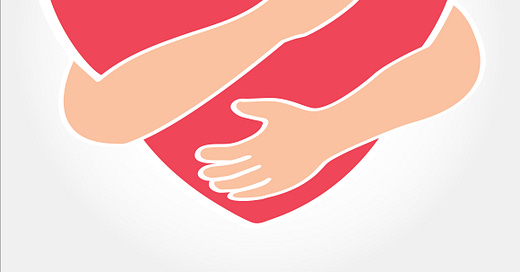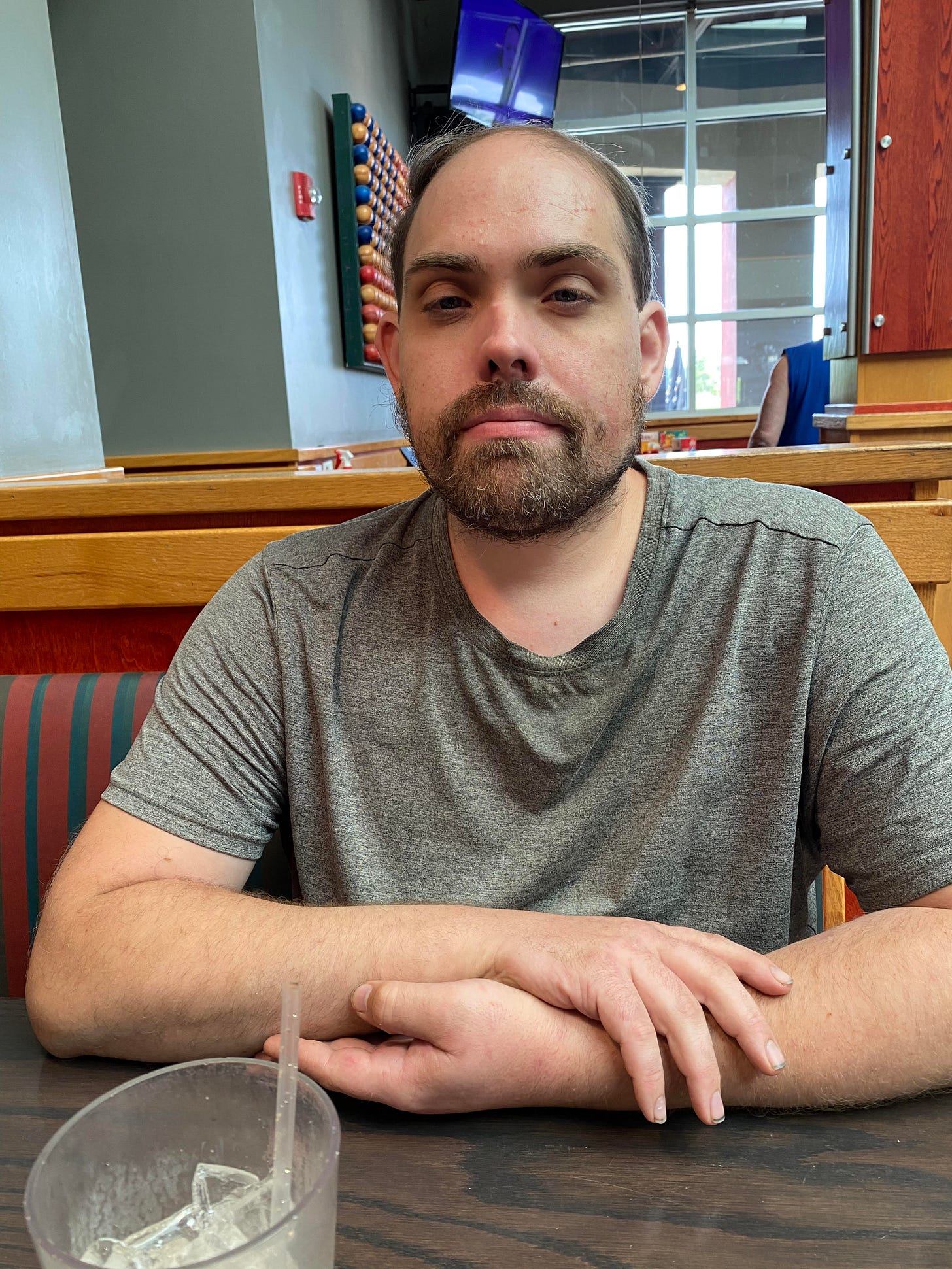“May I give you a hug?” my autistic adult son asks the stylist who has just cut his hair.
“Of course!” says Nicole, and opens her arms wide.
Allen envelops her in his strong embrace, all 6 foot 6 inches of him involved in the action. His eyes are closed. His mind is nowhere else at the moment, undistracted by pressing adult responsibilities. He is totally involved in the hug.
I watch from a slight distance and I notice that Nicole, the harried stylist who is the only one working in the shop today and who has kindly fit Allen in on short notice, seems to relax in Allen’s arms.
I smile to myself. The “church ladies” anticipate Allen’s hugs and line up to ask for one. For Allen, “hugging” did not come naturally but had to be learned. Not so long ago, the only people he hugged were me and his sister. Now, despite what Medium writer The Silent Wave notes is “initiating a risk”, Allen has perfected the art of the hug.

Communication is not Allen’s strong suit. There are often pauses between when he is asked a question and when he responds, synapses due to the Rich Club Network in his brain needing time to route to the correct area. He struggles with verbal speech and will often ask for, “time to get my words together.” We need to practice phone conversations ahead of time. He will probably never become comfortable at public oration.
But, man, can he give hugs!
Healthline.com lists many reasons why a hug can be valuable. The two that are most applicable to my son are “reducing fears” and “communication.” His own fear of new situations—such as getting his hair cut by someone unknown to him—is reduced by the willingness to hug. His inability to communicate with Nicole and give more than short responses to her questions is tempered by the hug, which clearly shows his gratitude.
Since the COVID 19 pandemic, many people avoid hugs and physical touch. Allen always asks with a polite, “May I hug you?’ If the answer is “no”, he offers a high five or a fist-bump. As Psychology Today suggests, he gauges the other person’s feelings and respects the response. He is never offended. But few people turn down a hug from Allen, this tall blue-eyed man with the same gentle nature as his late father. His hugs are healing.
Hillary Jacobs-Hendell, LCSW, suggests that a hug be “heart-beat to heart-beat”, that both people be fully involved, and that the hug is ended only when the huggee pulls slightly away. Hugs can be both mentally and physically healing. Wiki-How suggests that the hugger create a “warm and welcome space” for the hug.
The phone at the salon rings and Nicole reluctantly ends the embrace. But she is smiling and she says to Allen, “I needed that today. You can hug me anytime.”
Allen is changing the world. One hug at a time.
How do you feel about hugs? Do you initiate them? Would you like a accept from Allen?





